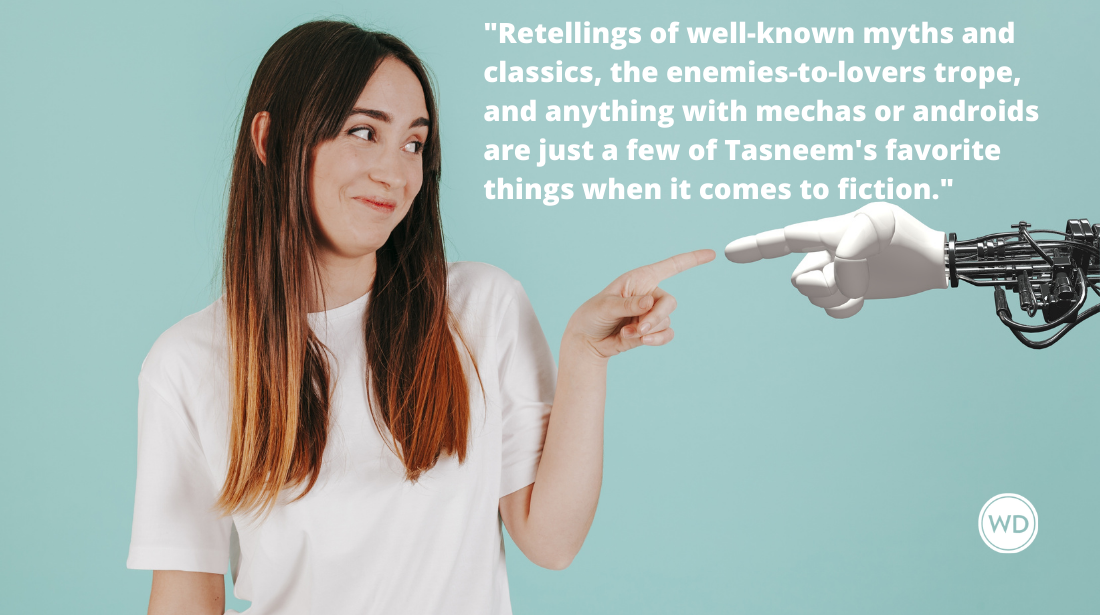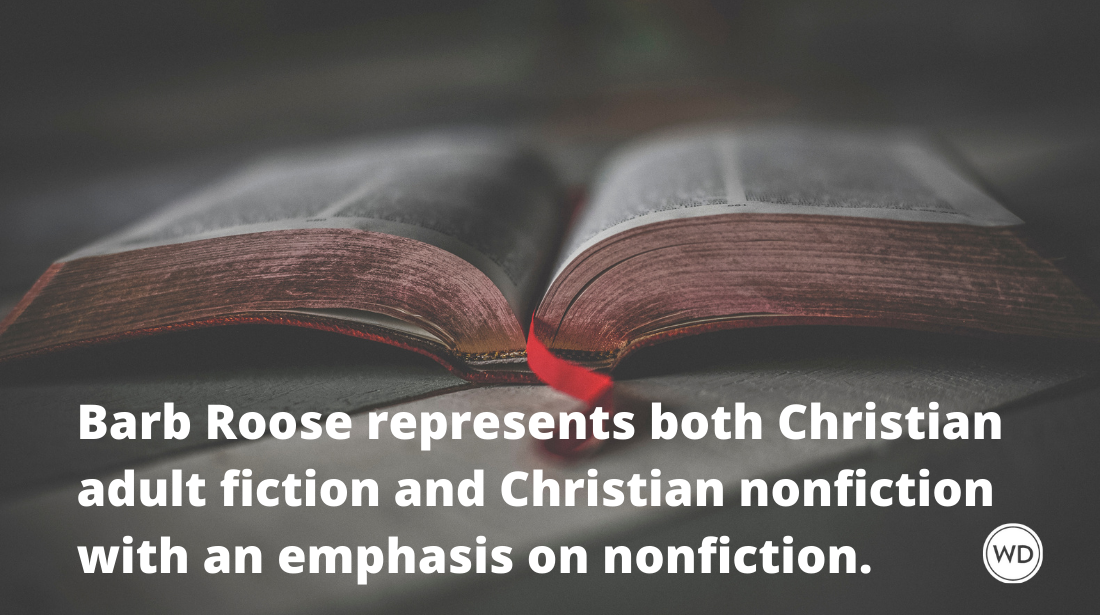Agent Advice: Emily Forland of Brandt & Hochman (Formerly of Wendy Weil Agency)
The best way to get advice from literary agents is to go directly to the source. In this post, get agent advice from Emily Forland of Brandt & Hochman.
“Agent Advice” (this installment featuring agent Emily Forland of Brandt & Hochman, formerly of the Wendy Weil Agency, Inc.) is a series of quick interviews with literary agents and script agents who talk with Guide to Literary Agents about their thoughts on writing, publishing, and just about anything else. This series has more than 170 interviews so far with reps from great literary agencies. This collection of interviews is a great place to start if you are just starting your research on literary agents.
(Read advice on how to promote and publicize your books.)
This installment features Emily Forland of The Wendy Weil Agency, Inc. Emily is in her twelfth year at The Wendy Weil Agency, Inc. In addition to representing her own list of authors, she also handles the agency's foreign rights. Originally from Texas, she has a B.A. in English from the University of Chicago, an MFA in Poetry from Sarah Lawrence College, and an MFA in Graphic Design from the School of Visual Arts in New York.
She seeks: The Wendy Weil Agency, Inc. represents fiction and nonfiction for the trade market. We work with literary and commercial fiction, mystery/thriller, memoir, narrative nonfiction, journalism, history, current affairs, books on health, science, popular culture, lifestyle, and art history. We do not handle screenplays or textbooks. See full submission guidelines here.
GLA: How did you become an agent?
EF: By accident. I needed a summer job after my first MFA year at Sarah Lawrence College. I met Wendy Weil and became an intern, which means I spent a summer reading manuscripts at the agency, answering the phone, and dragging packages to the mail truck. This was just after Wendy had been profiled in Poets & Writers sounding like herself, an approachable agent who champions writers. This resulted in a huge flood of submissions and it was my job to go through those manuscripts. Out of that unwieldy stack, I hit upon one that stood out, and that became an Oprah Pick, Mother of Pearl by Melinda Haynes. It was tremendously exciting to watch that happen. I got hooked. It was supposed to be a summer job, but it is 12 years later, and I am still here.
I like writers, and I like working with writers. I think having a bit of a writing background makes me empathize with the vulnerability of writers and what they go through in putting their work out into the world.
Also, lunch is a nice thing.
GLA: What’s the most recent thing you’ve sold?
EF: In fiction, a transfixing debut called Stiltsville by Iowa MFA grad Susanna Daniel. A love song to Miami, this episodic novel follows the life of a marriage, starting in the 1960s and ending in the 90s. It will be published by Jennifer Barth at HarperCollins next summer.
Nonfiction: Playwrights at Work, by Rosemarie Tichler and Barry Jay Kaplan, a lively collection of interviews with great American playwrights of the day, to Northwestern University Press.
(Read a guest column by one of Emily's clients, Miriam Gershow, author of THE LOCAL NEWS.)
GLA: What are you looking for right now and not getting? What do you pray for when tackling the slush pile?
EF: I’m looking for a distinctive voice. That can mean a lot of things, but I look at every submission wanting to be gobsmacked on the first page (and those that follow!) by original, compelling, well-crafted sentences. I like character-driven stories. Humor helps, though it isn’t a requirement.
GLA: Within commercial fiction, can you tell us about two or three manuscripts you recently agreed to represent and what grabbed you about each to the point where you knew you had to represent them?
EF: I guess I tend to be most interested in commercial fiction with literary qualities.
I took on a novel that made me laugh out loud on pretty much every page, at the same time that every sentence is so polished as to almost be some kind of perfect haiku. The structure is idiosyncratic, and the subject is an extremely timely take on the spiritual estrangement of contemporary culture. I was wowed by the writer’s originality and craft.
One novel is set on a hardscrabble subsistence farm in the Australian outback during World War II, beautifully and slyly told in the salty first person narration of the main character, a farmwife named Gin Toad. It is extremely accomplished.
Another novel follows an immigrant Russian family with three daughters of marriageable age. The writer’s approach is playful and original. She pokes fun at her characters, but she handles them with real affection. The dialogue is fizzy and hilarious. That dialogue got me. It jumps off the page.
GLA: Specifically within the thriller genre, do you prefer any particular subgenres, such as legal, psychological, or supernatural thrillers, etc.?
EF: I like a psychological novel. I have a knee-jerk reaction against the fantastical and supernatural (my own limitation) that I can get past when the story is grounded in strong writing.
GLA: Where do you notice most nonfiction book proposals fall short?
EF: Voice again. I want a proposal to be thorough, meticulously researched, well-organized, etc., but it also needs to be a compelling argument for the subsidized existence of this particular book. And the most convincing way for an author to demonstrate that is by being good company on the page. Also, there is that whole thing about platform (groan).
GLA: One area of nonfiction you seek is journalism. With the Internet pushing us toward an increasingly paperless society, many see the world of journalism as changing. Do you think printed newspapers and magazines will be obsolete one day? What should a journalism proposal look like in order to stay current with the times as well as catch your attention?
EF: I like paper and the tactile nature of books and magazines and newsprint. That said, I do read most of my news online. It is hard to deny that the magazine and newspaper business is heading that way. Ultimately, though, I suppose the story is what’s important and the medium of delivery is secondary.
Because of the way a publishing timeline usually works, a journalism book proposal should anticipate where the news is going and what we’ll be interested in a couple of years. The writer needs a solid platform, an area of expertise, to have done the research, and to convey it in a lively manner that convinces me I’m interested in a subject I didn’t necessarily previously know I wanted to read about. I once heard a nonfiction editor say that a journalistic book should either be the first book on a subject, or the last (definitive) book on a subject.
GLA: Is there a particular angle to explore or avenue to attempt for writers without celebrity status who wish to break into memoir?
EF: It depends on what you mean by ordinary people. If you mean a non-celebrity, yes definitely. But if you mean a common experience written in unextraordinary prose, probably not. What makes a successful memoir is a distinctive story, or else a distinctive take on a common life experience, combined with highly readable prose. And I’ve found that you really need both. Both the story and the voice. It doesn’t work when you have just half.
An example of a memoir that really worked is Jennifer Traig’s Devil in the Details (Little Brown). It tells about the author’s girlhood as an obsessive-compulsive religious fanatic. Books had been written about OCD, but at that time nobody had written about the disorder called scrupulosity. And Jenny’s writing is sympathetic, smart, and FUNNY. She has the distance on this period in her life to render it an insightful and very enjoyable reading experience.
Another was Margaret Sartor’s Miss American Pie (Bloomsbury), which, through compelling, moving, and sometimes unintentionally humorous diary excerpts, traces the author’s evolving girlhood, which was rife with romantic, identity, and spiritual crises in 1970s Louisiana. The authenticity of her voice crackles on the page.
(Find more memoir literary agents.)
GLA: Would you say your MFA in Graphic Design influences your acceptance of art pieces? For example, are you more interested in graphic design books? As well, what topics are you drawn to most in this category? Least?
EF: I am a visual person with an affinity for visual texts (art and design books, picture books, graphic novels, etc.) but have represented very few. Art books can be expensive to produce and challenging to get published, but I am always open to being wowed by a project.
GLA: Best piece(s) of advice we haven’t talked about yet?
EF: In terms of submitting material, we always talk about the importance of writers putting their best foot (feet?) forward. Because we’re all (editors and agents) inundated with reading, we don’t usually have time to see potential in work and nurture it until it becomes a polished finished piece (which isn’t to say that there isn’t some editing, and there are always exceptions). It is always a good idea for writers to ask another trusted reader to take a look before sending out their materials. It is to authors’ advantage to make sure their work is far along when it is goes out into the world for consideration.
In terms of writing, I once heard Tony Hillerman give a talk at the Taos Writers Conference and he spoke about how each person is the world’s expert on their own life experience (whether it be following the crime beat as a news reporter in the Southwest, or something else). He talked about the breakthrough in his own writing when he decided to mine the territory in which he was the world’s smartest. I guess that’s not new advice, but I thought it was a good way of thinking about it.
Ricki Schultz is a freelance writer and coordinator of Shenandoah Writers in VA. Visit her blog or follow her on Twitter.






